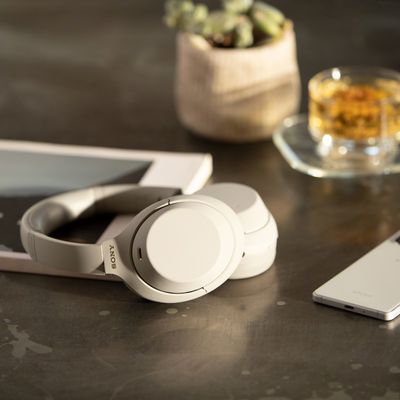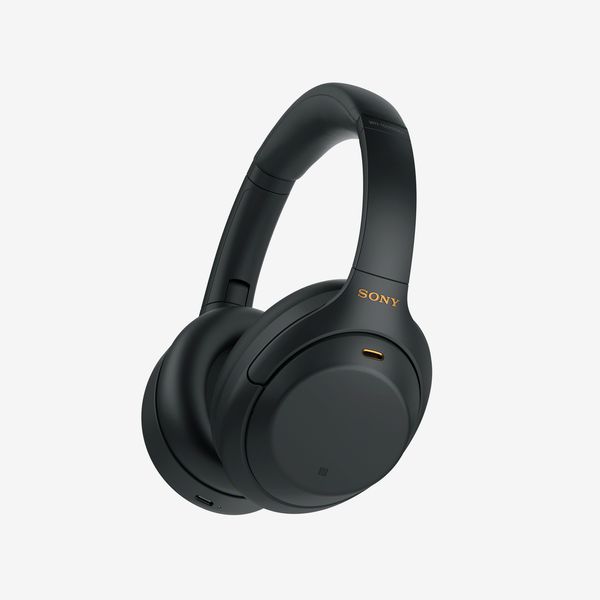
The first time I tried a pair of noise-canceling headphones, I felt like a kid experiencing a magic trick. It was 2015, the headphones were Bose QuietComfort 25s, and I still remember the grin widening across my face as I realized my friend was indeed speaking at his normal volume, but I (blissfully) couldn’t hear a word he was saying. Back then, Bose’s grip on the over-ear noise-canceling headphone market seemed unbreakable. After all, Bose was the first company to offer noise-canceling headphones to consumers, and by the mid-2010s, you basically couldn’t walk to a coach seat on an airplane without passing smartly dressed fliers in first and business class wearing QuietComforts.
But in 2018, Bose was ousted from its place atop the headphone heap when Sony launched its own noise-canceling over-ear competitor — the WH-1000XM3 — to rave reviews. At the time, our friends at the Verge declared, “Sony seizes the title for best noise-canceling cans with a winning redesign,” and CNET similarly proclaimed that Sony had “finally surpassed Bose as the best noise-canceling headphone.” Strategist contributor (and former tech columnist) David Pogue also praised the Sony XM3s on this website, calling them “the best noise-canceling headphones I’ve ever owned,” and saying that, compared to his Bose headphones, they “sound better. The bass is stronger and deeper, the midrange is balanced, the highs are crisp.”
I’ve used the Sony XM3s since the spring of 2019 (on planes and trains before the pandemic, and Zooms and walks during it) and can also attest to their worthiness. When they managed to hang onto their best-in-class reputation even after Bose debuted its newest Noise Canceling Headphones 700 last summer, it seemed the model had cemented itself as the one to buy based on performance and price. Still, the XM3s were never perfect. For instance, when Pogue wrote about them, his biggest criticism was with their Bluetooth compatibility and that the headphones could not “be paired simultaneously to two devices.” So when Sony reached out to me about the launch of the WH-1000XM4s — its next generation of noise-canceling headphones that promise to address Pogue’s and other criticisms — I welcomed an opportunity to give them a whirl. Could the already pretty great headphones really get any better?
After a few weeks of wearing them, I am happy to say that, even if marginally, they can. Pogue’s wish was apparently Sony’s command: The XM4s can maintain a connection to two devices at once, with the headphones automatically noticing when you switch between the two. This has been a game changer for someone like me, who switches between my phone and laptop all day as I get through phone calls, Zoom calls, Spotify playlists, and Twitter alerts. Rather than having to disconnect and reconnect as I flip constantly between the two, the upgrade allows me to stay happily in my sound cocoon for hours on end. This isn’t the only development that makes the XM4s even more functional. Like AirPods, the latest model can also pause whatever you’re listening to when you raise or slide back the left earphone. (With the XM3s, the only way to hear something when you’ve got the noise-canceling feature turned on is to take them off.) Now, when someone has to tell me something, or I want to hear the TV, my podcasts and music will automatically pause for me until I’m done.
Just as important as what has changed, though, is what hasn’t. The XM4s have the same superior battery life of a whopping 30 hours (or 10 hours more than the Bose NC700s). You can still make them “normal” headphones by simply pressing a button on the left earphone to turn off the noise-canceling feature. They still charge using a USB-C charger, so if you have a newer Apple computer, you can use those charging cables for these headphones and vice versa. The design, as far as I can tell, is identical in both size and construction, which means that, like the XM3s, they’re comfortable to wear for hours on end (unless you’re outdoors in peak summer). Sony has also kept the same two color options as the XM3s, a matte black and a light silver. Perhaps most appealingly, the XM4s are the same price as the XM3s, making their thoughtful tweaks seem even more for the user than the brand’s bottom line. And to anyone who doesn’t need those thoughtful tweaks, one more piece of good news: We’re already starting to see the beloved XM3s get heavily discounted.
The Strategist is designed to surface the most useful, expert recommendations for things to buy across the vast e-commerce landscape. Some of our latest conquests include the best acne treatments, rolling luggage, pillows for side sleepers, natural anxiety remedies, and bath towels. We update links when possible, but note that deals can expire and all prices are subject to change.







